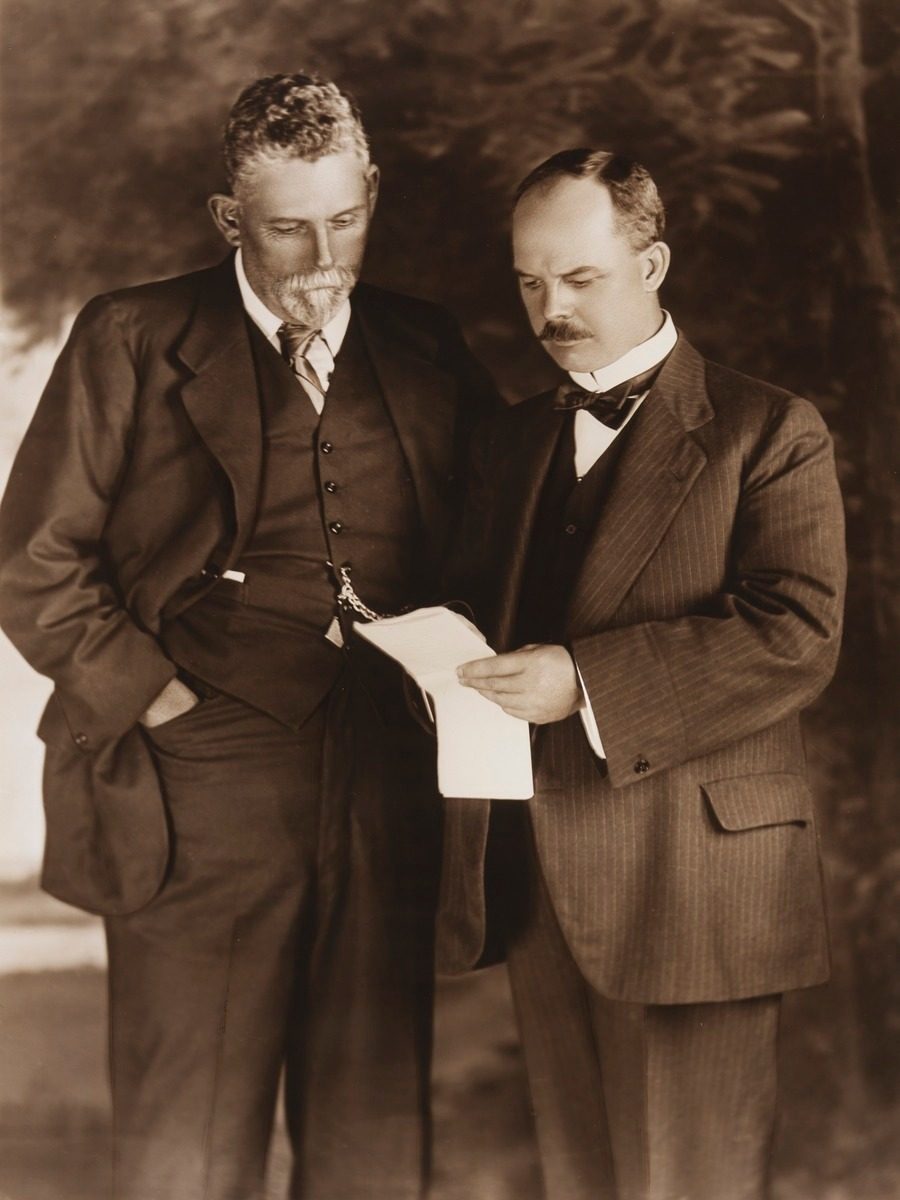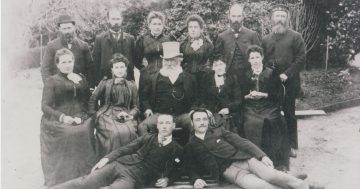
Arthur Bryant Triggs (right) with Sidney Kidman, 1914. Photo: Falk Studios, gelatin silver photograph, National Portrait Gallery of Australia.
Arthur Triggs was to sheep what Sir Sidney Kidman was to cattle: both giants in their respective paddocks. But until now, few have known much about Triggs or his advancements to the early Australian agricultural industry, particularly in the Yass Valley.
Member for Goulburn Wendy Tuckerman said Triggs’ significant part in the state’s rural history has been acknowledged with one of the first 17 NSW Government’s Blue Plaques.
The plaques celebrate people and stories who have contributed to the state’s rich history.
“Born on 30 January 1868, in Chelsea, London and arriving in Sydney in 1887, Triggs was a businessman based in Yass,” Mrs Tuckerman said.
“He bought and leased stations from Bourke to Kiandra – usually running between 250,000 and 500,000 sheep and some cattle.
“Throughout history, many of our region’s locals have made remarkable contributions to the wider community and I am thrilled to see Arthur Bryant Triggs recognised with this Blue Plaque.”
After arriving in Australia, Triggs joined the then Bank of NSW and after a number of temporary positions, he was sent to the Yass branch as an accountant.
He married Maria Sophia Ritchie at St Andrew’s Presbyterian Church Yass but she was to die only five years later.
Triggs took six months’ leave from the bank and spent some time with fellow local Abraham Wade, with the two buying 8000 wethers.
A new career had thus begun for the savvy moneyman and now grazier. He ended up buying out Wade’s interest, sold the stock well and, in 1897, he resigned from the bank. Three years later, in the same Yass church, he married Mary Maria McBean.
Triggs had cottoned on to a profitable yet simple money-making plan. Stock, he reckoned, could always be bought if he had enough land to raise it on.
This was the start of his practice of buying and leasing land all over the state so, regardless of the condition of individual paddocks and the weather, he always had good grazing land for his stock.
Records show he bought and leased a string of outback stations from out west of NSW to down in the Snowys, including Fort Bourke, Wirchilleba, Tara, Merri Merrigal, Wollogorang, Douro, Willie Ploma, Wee Jasper and Talbingo.
Running his headquarters from an office in the main street of Yass, Triggs was reported to have attributed much of his success to his staff, paying them well and treating them, along with their ideas, with respect. He also helped many men make their start on the land.
But drought and the onset of World War I saw Triggs forced into bankruptcy with debts, in 1915, at more than a million pounds.
But he didn’t stay down for long. Once wool prices rose again, he was able to market thousands of bales and by 1921, had paid off all his creditors and received a public testimonial from the folk of Yass.
Triggs’ other passion was collecting, particularly medieval manuscripts, coins, Bibles, autographs, letters – and the works of Charles Dickens. One of his few plans not to eventuate was his dream of establishing a Dickens museum in Yass.
He is also remembered as a great philanthropist, particularly favouring the Yass Hospital.
Triggs died in 1936 at his home, Linton, in Yass, which remains today as a grand country residence, complete with its own ballroom.
He was survived by a daughter from his first marriage and two sons and two daughters from his second marriage. His name lives on today in southern NSW as well as the ACT.
After his death, the Yass community showed their respect for Triggs by paying for the erection of a gateway in his memory to a local park.
NSW Minister for the Environment and Heritage, James Griffin, said the Blue Plaque awards provided an opportunity to celebrate the noteworthy people and stories that helped shape NSW.
“This initiative is all about recognising the eclectic characters, personalities and important public figures that have made or become part of the history and fabric of our state,” he said.
Other successful Blue Plaque nominations include aviator Nancy Bird Walton and artist Brett Whiteley.
The people of NSW can nominate people or stories for the Blue Plaque honour with the latest plaques scheduled to be installed in various cities and towns later this year.
More information is available at Blue Plaques NSW.










